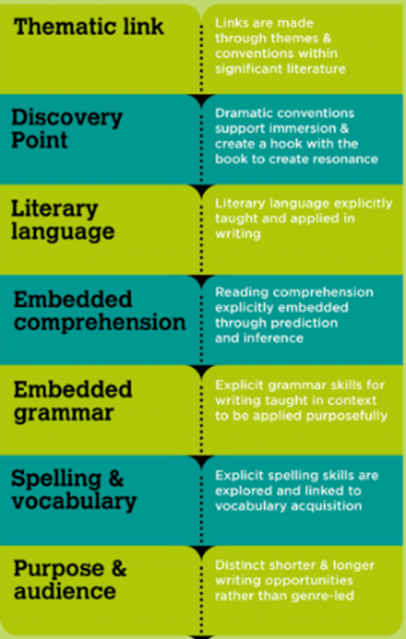Writing

At Stanion CE Primary School we believe that English skills are vital to the development of children so they are prepared for their future life. We teach a rich and varied English programme using objectives from the National Curriculum 2014. This determines the skills that each year group and Key Stage must cover. A range of genres are studied and promoted through engaging texts and interactive learning experiences. It is imperative that children are given a range of writing opportunities through both Literacy lessons and the wider curriculum. These lessons include the use of paired, group and independent writing tasks. We believe that this allows for the development of a culture where learning from each other is key to becoming a successful writer. We endeavour to provide writing experiences in classrooms where pupils are able to respond appropriately and supportively to their learning.
Intent
Writing is a vital skill that also supports the children’s learning across the whole curriculum. As a school, we will ensure that our children are taught to write with fluency, a deep understanding of grammatical terms and ways to express themselves, creativity and understanding of a wide range of genres of writing. Above all, we understand the important link between reading and writing and the necessity for the two to be intertwined to enable our children to become confident within both areas. We want our children to be as passionate about writing as they are reading and so encourage them to become enthusiastic, independent and reflective writers who use their ever-increasing knowledge of what they read to inform and inspire what they write.
Aims:
“You can make anything by writing” CS Lewis
We will develop children’s writing within an integrated programme of reading, speaking and listening/drama.
Our aims for writing are to:
- Encourage the children to attain high levels of achievement and exhibit positive attitudes towards writing
- Use and understand language as speakers, readers and writers
- Ensure the children are competent, confident and independent in the use of higher level vocabulary and language within their writing
- Teach the children the different purposes for writing and encourage understanding and confidence in composing different genres of writing.
- Build confidence in the children to apply their grammatical knowledge within their writing.
- Build confidence in the children to apply their phonetical and spelling knowledge within their writing
- Help the children to apply the English language in all areas of the curriculum.
Our writing lessons use ‘The Literacy Tree’ whose writing resource, Writing Roots, is based around the ‘teach through a text’ pedagogy, embedding all National Curriculum requirements and placing audience and purpose at the core.
Literacy Tree’s primary focus, through its book-based pedagogy, is to motivate children to write for a range of audiences and purposes using high-quality, diverse children’s literature by significant authors. We do this by helping schools immerse children in a range of literary worlds and themes, heightening engagement and creating curiosity through process drama, discussion and debate. This allows them to see themselves represented, and also explore the lives and experiences of others.
Twice yearly, the children will take part in a ‘whole school stimulus’ piece of writing. This will involve a whole school stimulus and writing to come from this from Reception – Year 6.
The Literacy Tree bases itself around the following structure:

Handwriting
We are very proud of our pupil’s handwriting and take particular care in our cursive/joined-up handwriting style. We use Letter-join as the basis of our handwriting policy that covers all the requirements of the 2014 National Curriculum.
Handwriting is a basic skill that influences the quality of work throughout the curriculum. At the end of Key Stage 2 all pupils should have the ability to produce fluent, legible and, eventually, speedy joined-up handwriting, and to understand the different forms of handwriting used for different purposes.
We aim to make handwriting an automatic process that does not interfere with creative and mental thinking. We aim for our pupils to develop a neat, legible, speedy handwriting style using continuous cursive letters that leads to producing letters and words automatically in independent writing.
By the end of Year 6 pupils will understand the importance of neat presentation and the need for different letterforms (cursive, printed or capital letters) to help communicate meaning clearly.
Handwriting is a cross-curriculum task and will be taken into consideration during all lessons. Formal teaching of handwriting is to be carried out regularly and systematically to ensure Key Stage targets are met.
If we feel that children need further support with their handwriting to secure their end of key stage expectations, we will ensure timely and appropriate interventions are put in place using the ‘Letter Join Recovery Scheme’ or through the use of ‘Bubble Writing’ as an alternative approach.
Spelling
From Year 1 to Year 6 all children take home weekly spellings to practise and learn. We use ‘Emile Spelling’ as an aid in helping the children to learn and understand their spellings and consolidate this through weekly, discrete spelling lessons. You can access the spelling scheme through https://emile-education.com/
Through exploring spelling patterns and rules, we aim to create confident and proficient spellers using a discrete teaching approach underpinned by phonics.
Children are also taught to
- Spell accurately and identify reasons for mis-spellings.
- Proof-read their spellings
- Recognise and use word origins, families and roots to build their skills
- Use dictionaries and thesauruses.
